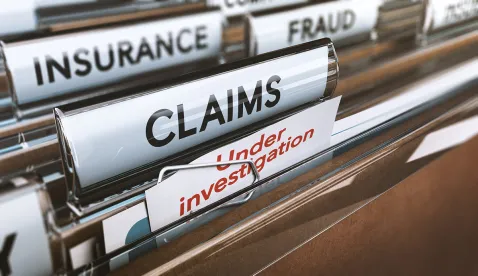With the COVID-19 pandemic showing few signs of slowing down in the immediate future, reality is starting to settle in on businesses and governments. As Congress and various state legislatures continue to discuss legislation aimed at remedying the economic damage caused by the pandemic, many businesses are grappling with extensive interruptions to their operations. In this blog post, we continue to explore the issues related to potential business interruption coverage for COVID-19, this time focusing on whether coverage requires the total cessation or disruption of business, or whether a partial cessation or disruption may suffice.
As we have discussed in our prior posts, many insurance policies include provisions for business income and extra expense coverage, also known as business interruption coverage. These provisions traditionally provide coverage for loss resulting from a “suspension” of business operations. Not all insurance policies describe “suspension” in the same way. While some insurance policies refer to a “necessary” suspension (see ISO CP00300402), other insurance policies refer to “necessary or potential” suspensions or to “necessary interruption of business, whether total or partial.” Generally, policies do not define either term. As various courts have determined, the difference between “necessary,” “potential” and “partial” may be crucial.
The vast majority of courts have interpreted “necessary suspension” as requiring a complete cessation of business operations. For example, in Madison Maidens, Inc. v. American Manufacturers Mutual Insurance Co., No. 05-4585, 2006 U.S. Dist. LEXIS 39633 (S.D.N.Y. June 14, 2006), the court granted summary judgment to the insurer, finding there was no business interruption coverage because a water leak did not cause a “complete cessation” of business operations. In that case, the business was still able to operate (although not at full capacity) in spite of the water leak.
At 5:00 pm on a Friday, a water leak began damaging the insured premises. The damage was not noticed until the following Monday. Then, “and for some time thereafter,” “at least some employees” worked on salvaging office materials and supplies. At least two employees, however, were able to return to work on Monday and focus solely on their jobs instead of recovery efforts. The policy provided business interruption coverage in the event of a “necessary suspension of [the insured’s] ‘operations.’” There was also an Extended Period of Indemnity provision that stated, in relevant part:
If the necessary suspension of your “operations” produces a “business income” loss payable under this policy, and you resume “operations” with reasonable speed, we will pay for the actual loss of “business income” you incur during the “extended period of indemnity” (emphasis added).
The court found that “necessary suspension” required a “complete cessation of activity, even a temporary one.” (Emphasis in original). Additionally, the presence of “resume” in the Extended Period of Indemnity Provision also influenced the court’s analysis. The court indicated that the choice of “resume” meant “‘there must necessarily have been a stoppage of operations from which it was necessary to begin anew.’” (internal citations omitted).
Another court considered the extent of consumer demand in determining whether there had been a complete cessation of business operations. In H & H Hospitality LLC v. Discover Specialty Insurance Co., No. 10-1886, 2011 U.S. Dist. LEXIS 146055 (S.D. Tex. Dec. 20, 2011), the court granted summary judgment to the insurer, finding there was no business interruption coverage.
Hurricane Ike damaged the insured motel, which consisted of two buildings. The second building bore the brunt of damage, resulting in the loss of part of its roof. Additionally, high winds rendered approximately forty rooms between both buildings not rentable, with the majority of those rooms in the second building. Despite the damage, the motel continued to operate and rent some of its rooms, although the opinion did not specify how many.
Although the motel was damaged, that damage was not the sole factor the court examined. The court noted that the motel “remained open continuously” and that the insured did not argue the damage was so extensive it could not meet consumer demand or had to turn any customers away. The court also examined historical occupancy rates and found the motel’s occupancy had never exceeded 80% and generally hovered around 60%. Query the implications of H & H Hospitality on insureds with extensive interaction with third parties and whether reduced demand due to quarantines, either self-imposed or by civil order, may affect coverage under a “necessary suspension” provision.
Other courts have echoed the court’s conclusions in H & H. See Ramada Inn Ramogreen, Inc. v. Travelers Indemnity Co., 835 F.2d 812 (11th Cir. 1988) (policy providing business interruption insurance for restaurant and hotel did not cover losses for lower hotel occupancy caused by damage and closure of restaurant because it did not result in a complete cessation of hotel operations); Lantheus Medical Imaging v. Zurich American Insurance Co., 255 F. Supp. 3d 443 (S.D.N.Y. 2015) (collecting cases, but decided on other grounds).
One court has interpreted “necessary or potential” suspension language as not requiring a total cessation of business operations. In American Medical Imaging Corp. v. St. Paul Fire & Marine Insurance Co., 949 F.2d 690 (3rd Cir. 1991), the court reversed summary judgment previously granted to the insurer. The insured provided ultrasound testing services for the medical industry. Early one morning, its headquarters caught fire. The day after the fire, the insured had procured an alternative worksite and obtained some working telephone lines by 1:00 pm, but argued that it lost income due to diminished capacity and incurred extra expense because of the temporary relocation. It did not return to its original headquarters for six weeks. The policy provided coverage for loss resulting from “the necessary or potential suspension of [the insured’s] operations.”
The court concluded that there would be coverage if the trier of fact believed the insured’s evidence that the insured suffered a “necessary suspension” on the morning following the fire and on the morning of the fire, a “potential suspension of a much longer duration.”
Additionally, policy language expressly covering “partial” suspensions brings another level of analysis. In Aztar Corp. v. U.S. Fire Insurance Co., 224 P.3d 960 (Ariz. Ct. App. 2010), although the court ultimately affirmed summary judgment to the excess insurers for different reasons, it still found the trial court erred when it granted summary judgment to the excess insurers under the theory that the insured’s operations were not diminished. The insured was a casino in the midst of a 27-story expansion when six floors collapsed, necessitating the closure of the casino’s main entrance, a pedestrian bridge, a hotel tower, parking structure, and bus terminal. It took one month to rebuild the six floors and open to the public. These events caused a decline in patronage. The policy provided potential coverage for “loss resulting directly from necessary interruption of business, whether total or partial.”
The court interpreted “partial” broadly, concluding it could also refer to complete cessation of a portion of a business:
The addition of the phrase ‘total or partial’ also makes it plain that any stoppage, or hindrance, need not impact the entire ‘business’ but only a portion. We do not, however, conclude that the use of the term “or partial” can only be given meaning by allowing coverage for reduced patronage. It can be applied, as the Excess Insurers argue, to mean the complete stoppage of a portion of an insured’s business as contrasted with stoppage of the entirety of an insured’s business.
Putting aside the other myriad issues previously blogged concerning business interruption coverage, the extent of an insured’s suspension of business and how the insurance policy applies to that suspension is yet another issue for policyholders and insurers to contend with when addressing business interruption coverage.





 />i
/>i
